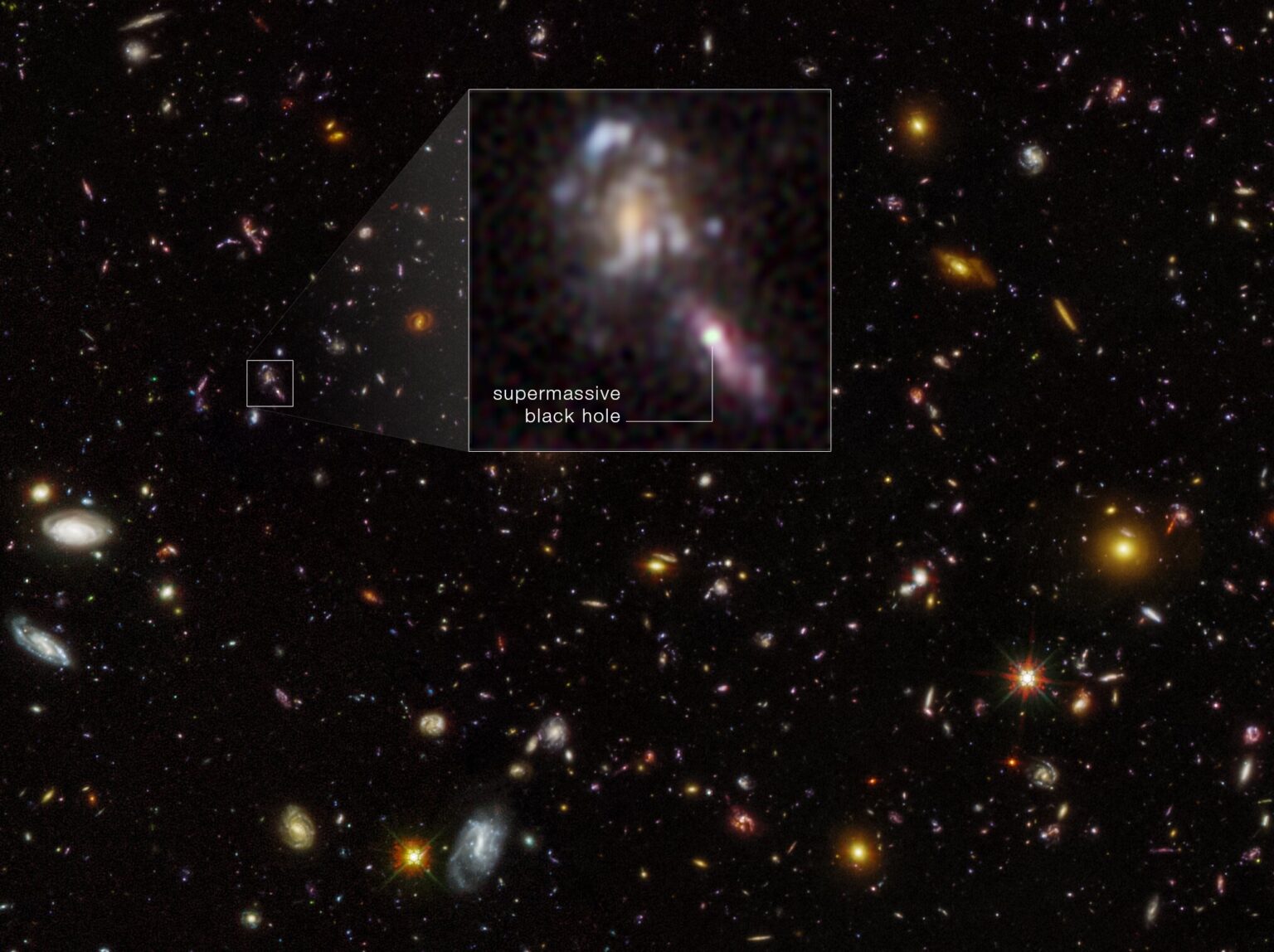A team of scientists working with the Hubble Space Telescope reports the results of their study of supermassive black holes in the early Universe. These monsters, located at the centers of large galaxies, have turned out to be more.

Mystery of primordial supermassive black holes
Using NASA’s Hubble Space Telescope, an international team of researchers led by scientists from the Department of Astronomy at Stockholm University has discovered more black holes in the early Universe than previously reported. The new result could help scientists understand how supermassive black holes were created.
Scientists don’t have a complete picture of how the first black holes formed shortly after the Big Bang. Supermassive black holes, which can weigh more than a billion suns, are known to exist at the center of several galaxies less than a billion years after the Big Bang.
“Many of these objects seem to be more massive than we originally thought they could be at such early times—either they formed very massive or they grew extremely quickly,” said Alice Young, a graduate student at Stockholm University and co-author of the study published in The Astrophysical Journal Letters.
Search for black holes at early stage of evolution
Black holes play an important role in the life cycle of all galaxies, but there is a great deal of uncertainty in our understanding of how galaxies evolve. To get a complete picture of the links between the evolution of galaxies and black holes, the researchers used Hubble to find out how many black holes existed among the population of faint galaxies when the age of the Universe was only a few percent of its current age.
The original observations of the study area were re-photographed by Hubble several years later. This allowed the team to measure variations in the brightness of galaxies. These variations are a characteristic of black holes. The team found more black holes than had previously been found by other methods.
New observational results suggest that some black holes likely formed from the collapse of massive, pristine stars during the first billion years of cosmic time. Such stars can only exist at very early stages of the Universe’s evolution, since later stars are contaminated by the remnants of stars that have already lived and died.
Different hypotheses of formation of supermassive black holes
Other alternatives for black hole formation include the collapse of gas clouds, the merging of stars into massive clusters, and “primordial” black holes formed (by physical mechanisms) in the first few seconds after the Big Bang. With this new information on black hole formation, more accurate models of galaxy formation can be made.
“The formation mechanism of early black holes is an important part of the puzzle of galaxy evolution,” said Matthew Hayes from the Department of Astronomy at Stockholm University and lead author of the study. “Together with models for how black holes grow, galaxy evolution calculations can now be placed on a more physically motivated footing, with an accurate scheme for how black holes came into existence from collapsing massive stars.”
Astronomers are also making observations with NASA’s James Webb Space Telescope to search for galactic black holes that formed shortly after the Big Bang to see how massive they were and where they are located.
According to phys.org


